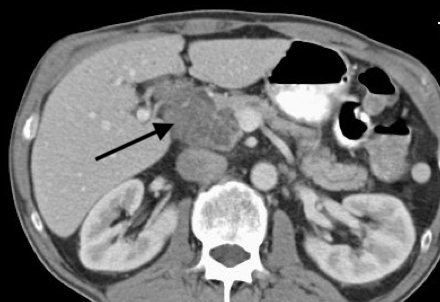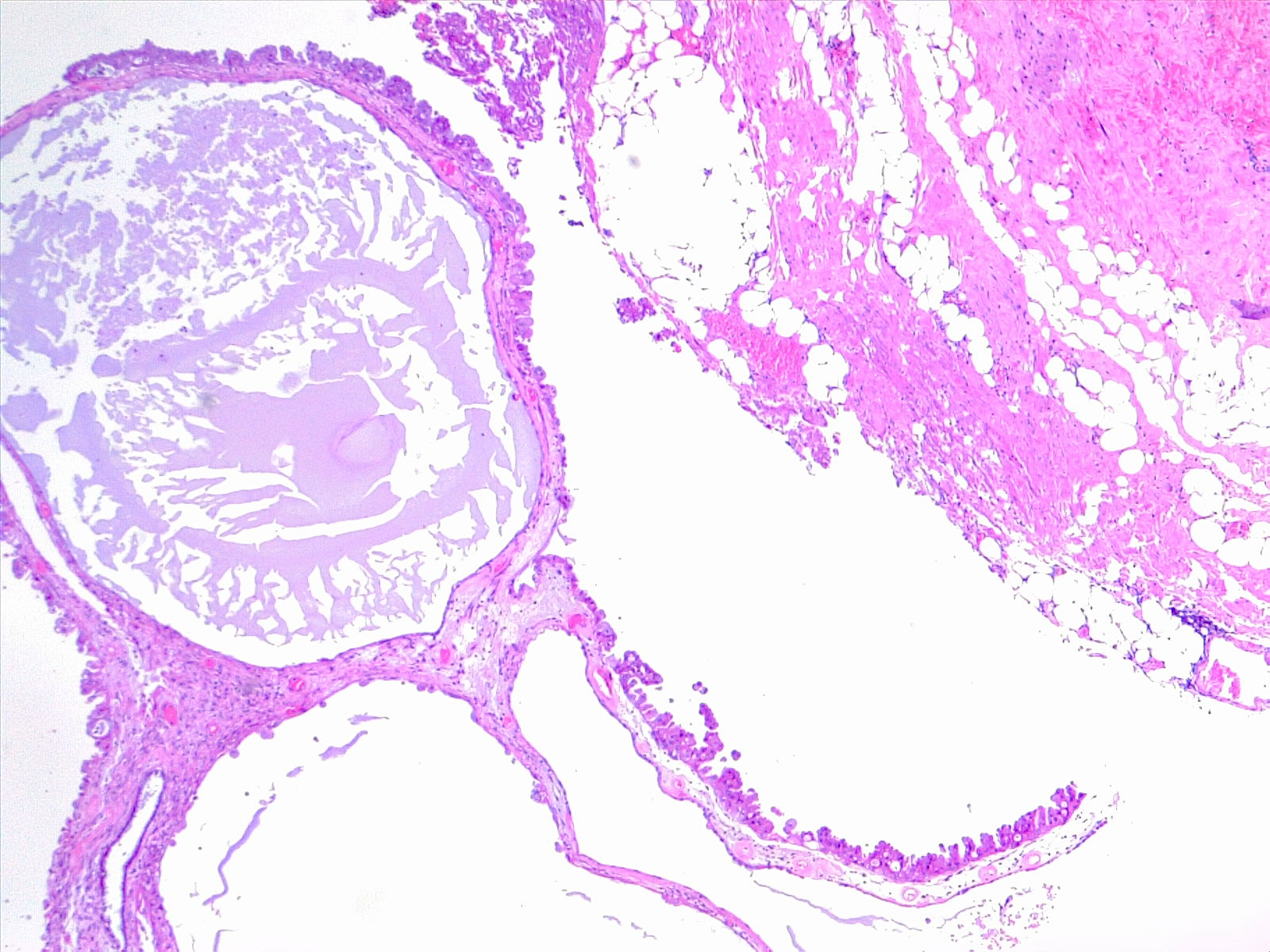[1]
Jais B, Rebours V, Malleo G, Salvia R, Fontana M, Maggino L, Bassi C, Manfredi R, Moran R, Lennon AM, Zaheer A, Wolfgang C, Hruban R, Marchegiani G, Fernández Del Castillo C, Brugge W, Ha Y, Kim MH, Oh D, Hirai I, Kimura W, Jang JY, Kim SW, Jung W, Kang H, Song SY, Kang CM, Lee WJ, Crippa S, Falconi M, Gomatos I, Neoptolemos J, Milanetto AC, Sperti C, Ricci C, Casadei R, Bissolati M, Balzano G, Frigerio I, Girelli R, Delhaye M, Bernier B, Wang H, Jang KT, Song DH, Huggett MT, Oppong KW, Pererva L, Kopchak KV, Del Chiaro M, Segersvard R, Lee LS, Conwell D, Osvaldt A, Campos V, Aguero Garcete G, Napoleon B, Matsumoto I, Shinzeki M, Bolado F, Fernandez JM, Keane MG, Pereira SP, Acuna IA, Vaquero EC, Angiolini MR, Zerbi A, Tang J, Leong RW, Faccinetto A, Morana G, Petrone MC, Arcidiacono PG, Moon JH, Choi HJ, Gill RS, Pavey D, Ouaïssi M, Sastre B, Spandre M, De Angelis CG, Rios-Vives MA, Concepcion-Martin M, Ikeura T, Okazaki K, Frulloni L, Messina O, Lévy P. Serous cystic neoplasm of the pancreas: a multinational study of 2622 patients under the auspices of the International Association of Pancreatology and European Pancreatic Club (European Study Group on Cystic Tumors of the Pancreas). Gut. 2016 Feb:65(2):305-12. doi: 10.1136/gutjnl-2015-309638. Epub 2015 Jun 4
[PubMed PMID: 26045140]
[2]
Brugge WR, Lauwers GY, Sahani D, Fernandez-del Castillo C, Warshaw AL. Cystic neoplasms of the pancreas. The New England journal of medicine. 2004 Sep 16:351(12):1218-26
[PubMed PMID: 15371579]
[3]
Tseng JF, Warshaw AL, Sahani DV, Lauwers GY, Rattner DW, Fernandez-del Castillo C. Serous cystadenoma of the pancreas: tumor growth rates and recommendations for treatment. Annals of surgery. 2005 Sep:242(3):413-9; discussion 419-21
[PubMed PMID: 16135927]
[4]
Del Chiaro M,Verbeke C,Salvia R,Klöppel G,Werner J,McKay C,Friess H,Manfredi R,Van Cutsem E,Löhr M,Segersvärd R, European experts consensus statement on cystic tumours of the pancreas. Digestive and liver disease : official journal of the Italian Society of Gastroenterology and the Italian Association for the Study of the Liver. 2013 Sep;
[PubMed PMID: 23415799]
Level 3 (low-level) evidence
[5]
Yoon WJ, Lee JK, Lee KH, Ryu JK, Kim YT, Yoon YB. Cystic neoplasms of the exocrine pancreas: an update of a nationwide survey in Korea. Pancreas. 2008 Oct:37(3):254-8. doi: 10.1097/MPA.0b013e3181676ba4. Epub
[PubMed PMID: 18815545]
Level 3 (low-level) evidence
[6]
Galanis C, Zamani A, Cameron JL, Campbell KA, Lillemoe KD, Caparrelli D, Chang D, Hruban RH, Yeo CJ. Resected serous cystic neoplasms of the pancreas: a review of 158 patients with recommendations for treatment. Journal of gastrointestinal surgery : official journal of the Society for Surgery of the Alimentary Tract. 2007 Jul:11(7):820-6
[PubMed PMID: 17440789]
[7]
Hammel PR, Vilgrain V, Terris B, Penfornis A, Sauvanet A, Correas JM, Chauveau D, Balian A, Beigelman C, O'Toole D, Bernades P, Ruszniewski P, Richard S. Pancreatic involvement in von Hippel-Lindau disease. The Groupe Francophone d'Etude de la Maladie de von Hippel-Lindau. Gastroenterology. 2000 Oct:119(4):1087-95
[PubMed PMID: 11040195]
[8]
Klöppel G,Solcia E,Capella C,Heitz PU, Classification of neuroendocrine tumours. Italian journal of gastroenterology and hepatology. 1999 Oct;
[PubMed PMID: 10604114]
[9]
Bassi C, Salvia R, Molinari E, Biasutti C, Falconi M, Pederzoli P. Management of 100 consecutive cases of pancreatic serous cystadenoma: wait for symptoms and see at imaging or vice versa? World journal of surgery. 2003 Mar:27(3):319-23
[PubMed PMID: 12607059]
Level 3 (low-level) evidence
[10]
Kerlin DL, Frey CF, Bodai BI, Twomey PL, Ruebner B. Cystic neoplasms of the pancreas. Surgery, gynecology & obstetrics. 1987 Dec:165(6):475-8
[PubMed PMID: 2446398]
[11]
Warshaw AL, Rutledge PL. Cystic tumors mistaken for pancreatic pseudocysts. Annals of surgery. 1987 Apr:205(4):393-8
[PubMed PMID: 3566376]
[12]
Khalid A, Brugge W. ACG practice guidelines for the diagnosis and management of neoplastic pancreatic cysts. The American journal of gastroenterology. 2007 Oct:102(10):2339-49
[PubMed PMID: 17764489]
Level 1 (high-level) evidence
[13]
Kimura W, Moriya T, Hirai I, Hanada K, Abe H, Yanagisawa A, Fukushima N, Ohike N, Shimizu M, Hatori T, Fujita N, Maguchi H, Shimizu Y, Yamao K, Sasaki T, Naito Y, Tanno S, Tobita K, Tanaka M. Multicenter study of serous cystic neoplasm of the Japan pancreas society. Pancreas. 2012 Apr:41(3):380-7. doi: 10.1097/MPA.0b013e31822a27db. Epub
[PubMed PMID: 22415666]
Level 2 (mid-level) evidence
[14]
Johnson CD, Stephens DH, Charboneau JW, Carpenter HA, Welch TJ. Cystic pancreatic tumors: CT and sonographic assessment. AJR. American journal of roentgenology. 1988 Dec:151(6):1133-8
[PubMed PMID: 3055888]
[15]
Choi JY, Kim MJ, Lee JY, Lim JS, Chung JJ, Kim KW, Yoo HS. Typical and atypical manifestations of serous cystadenoma of the pancreas: imaging findings with pathologic correlation. AJR. American journal of roentgenology. 2009 Jul:193(1):136-42. doi: 10.2214/AJR.08.1309. Epub
[PubMed PMID: 19542405]
[16]
Kim SY, Lee JM, Kim SH, Shin KS, Kim YJ, An SK, Han CJ, Han JK, Choi BI. Macrocystic neoplasms of the pancreas: CT differentiation of serous oligocystic adenoma from mucinous cystadenoma and intraductal papillary mucinous tumor. AJR. American journal of roentgenology. 2006 Nov:187(5):1192-8
[PubMed PMID: 17056905]
[17]
Khurana B, Mortelé KJ, Glickman J, Silverman SG, Ros PR. Macrocystic serous adenoma of the pancreas: radiologic-pathologic correlation. AJR. American journal of roentgenology. 2003 Jul:181(1):119-23
[PubMed PMID: 12818841]
[18]
Cohen-Scali F, Vilgrain V, Brancatelli G, Hammel P, Vullierme MP, Sauvanet A, Menu Y. Discrimination of unilocular macrocystic serous cystadenoma from pancreatic pseudocyst and mucinous cystadenoma with CT: initial observations. Radiology. 2003 Sep:228(3):727-33
[PubMed PMID: 12954892]
[19]
Procacci C, Graziani R, Bicego E, Bergamo-Andreis IA, Guarise A, Valdo M, Bogina G, Solarino U, Pistolesi GF. Serous cystadenoma of the pancreas: report of 30 cases with emphasis on the imaging findings. Journal of computer assisted tomography. 1997 May-Jun:21(3):373-82
[PubMed PMID: 9135643]
Level 3 (low-level) evidence
[20]
Panarelli NC, Park KJ, Hruban RH, Klimstra DS. Microcystic serous cystadenoma of the pancreas with subtotal cystic degeneration: another neoplastic mimic of pancreatic pseudocyst. The American journal of surgical pathology. 2012 May:36(5):726-31. doi: 10.1097/PAS.0b013e31824cf879. Epub
[PubMed PMID: 22498822]
[21]
Sahni VA, Mortelé KJ. The bloody pancreas: MDCT and MRI features of hypervascular and hemorrhagic pancreatic conditions. AJR. American journal of roentgenology. 2009 Apr:192(4):923-35. doi: 10.2214/AJR.08.1602. Epub
[PubMed PMID: 19304696]
[22]
Mottola JC, Sahni VA, Erturk SM, Swanson R, Banks PA, Mortele KJ. Diffusion-weighted MRI of focal cystic pancreatic lesions at 3.0-Tesla: preliminary results. Abdominal imaging. 2012 Feb:37(1):110-7. doi: 10.1007/s00261-011-9737-6. Epub
[PubMed PMID: 21512724]
[23]
Compagno J, Oertel JE. Mucinous cystic neoplasms of the pancreas with overt and latent malignancy (cystadenocarcinoma and cystadenoma). A clinicopathologic study of 41 cases. American journal of clinical pathology. 1978 Jun:69(6):573-80
[PubMed PMID: 665578]
Level 3 (low-level) evidence
[24]
Warshaw AL, Compton CC, Lewandrowski K, Cardenosa G, Mueller PR. Cystic tumors of the pancreas. New clinical, radiologic, and pathologic observations in 67 patients. Annals of surgery. 1990 Oct:212(4):432-43; discussion 444-5
[PubMed PMID: 2171441]
[25]
Lennon AM, Rintoul RC, Penman ID. Competition for EUS (a) EBUS-TBNA (b) video assisted thoracoscopy. Endoscopy. 2006 Jun:38 Suppl 1():S80-3
[PubMed PMID: 16802233]
[26]
Lewandrowski KB, Southern JF, Pins MR, Compton CC, Warshaw AL. Cyst fluid analysis in the differential diagnosis of pancreatic cysts. A comparison of pseudocysts, serous cystadenomas, mucinous cystic neoplasms, and mucinous cystadenocarcinoma. Annals of surgery. 1993 Jan:217(1):41-7
[PubMed PMID: 8424699]
[27]
Springer S, Wang Y, Dal Molin M, Masica DL, Jiao Y, Kinde I, Blackford A, Raman SP, Wolfgang CL, Tomita T, Niknafs N, Douville C, Ptak J, Dobbyn L, Allen PJ, Klimstra DS, Schattner MA, Schmidt CM, Yip-Schneider M, Cummings OW, Brand RE, Zeh HJ, Singhi AD, Scarpa A, Salvia R, Malleo G, Zamboni G, Falconi M, Jang JY, Kim SW, Kwon W, Hong SM, Song KB, Kim SC, Swan N, Murphy J, Geoghegan J, Brugge W, Fernandez-Del Castillo C, Mino-Kenudson M, Schulick R, Edil BH, Adsay V, Paulino J, van Hooft J, Yachida S, Nara S, Hiraoka N, Yamao K, Hijioka S, van der Merwe S, Goggins M, Canto MI, Ahuja N, Hirose K, Makary M, Weiss MJ, Cameron J, Pittman M, Eshleman JR, Diaz LA Jr, Papadopoulos N, Kinzler KW, Karchin R, Hruban RH, Vogelstein B, Lennon AM. A combination of molecular markers and clinical features improve the classification of pancreatic cysts. Gastroenterology. 2015 Nov:149(6):1501-10. doi: 10.1053/j.gastro.2015.07.041. Epub 2015 Aug 4
[PubMed PMID: 26253305]
[28]
Strobel O, Z'graggen K, Schmitz-Winnenthal FH, Friess H, Kappeler A, Zimmermann A, Uhl W, Büchler MW. Risk of malignancy in serous cystic neoplasms of the pancreas. Digestion. 2003:68(1):24-33
[PubMed PMID: 12949436]
[29]
Fukasawa M, Maguchi H, Takahashi K, Katanuma A, Osanai M, Kurita A, Ichiya T, Tsuchiya T, Kin T. Clinical features and natural history of serous cystic neoplasm of the pancreas. Pancreatology : official journal of the International Association of Pancreatology (IAP) ... [et al.]. 2010:10(6):695-701. doi: 10.1159/000320694. Epub 2011 Jan 18
[PubMed PMID: 21242709]
[30]
Ge C, Luo X, Chen X, Guo K. Enucleation of pancreatic cystadenomas. Journal of gastrointestinal surgery : official journal of the Society for Surgery of the Alimentary Tract. 2010 Jan:14(1):141-7. doi: 10.1007/s11605-009-1023-3. Epub 2009 Sep 25
[PubMed PMID: 19779948]
[31]
Compagno J, Oertel JE. Microcystic adenomas of the pancreas (glycogen-rich cystadenomas): a clinicopathologic study of 34 cases. American journal of clinical pathology. 1978 Mar:69(3):289-98
[PubMed PMID: 637043]
Level 3 (low-level) evidence
[32]
Hee MR, Izatt JA, Swanson EA, Huang D, Schuman JS, Lin CP, Puliafito CA, Fujimoto JG. Optical coherence tomography of the human retina. Archives of ophthalmology (Chicago, Ill. : 1960). 1995 Mar:113(3):325-32
[PubMed PMID: 7887846]
[33]
Brugge WR. Endoscopic Ultrasound-Guided Ablation of Pancreatic Cysts. Gastroenterology & hepatology. 2018 Oct:14(10):602-604
[PubMed PMID: 30774574]
[34]
Yoon WJ, Brugge WR. Pancreatic cystic neoplasms: diagnosis and management. Gastroenterology clinics of North America. 2012 Mar:41(1):103-18. doi: 10.1016/j.gtc.2011.12.016. Epub 2012 Jan 20
[PubMed PMID: 22341252]


